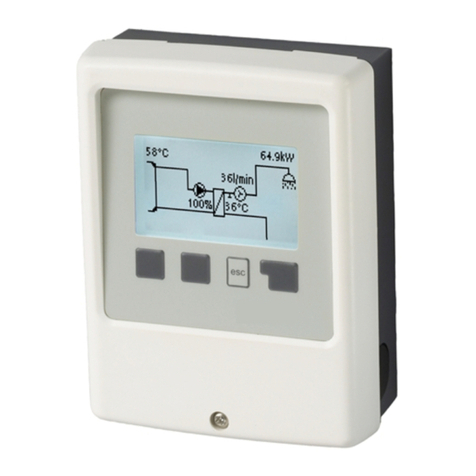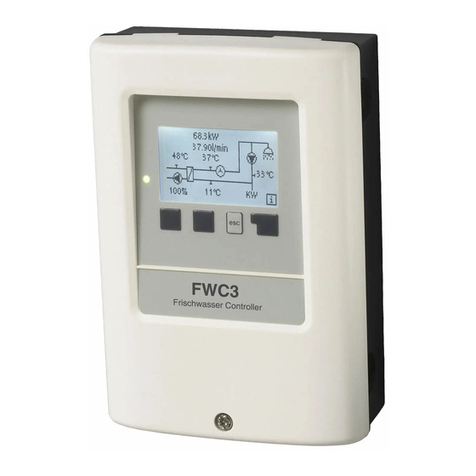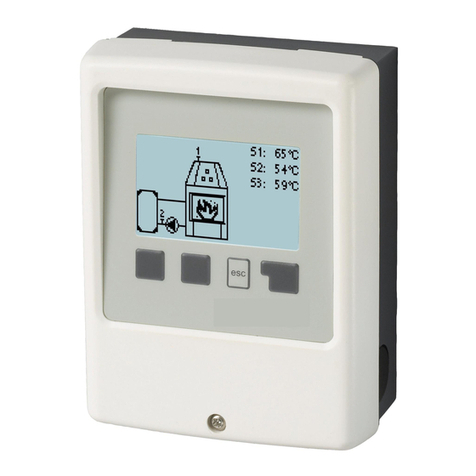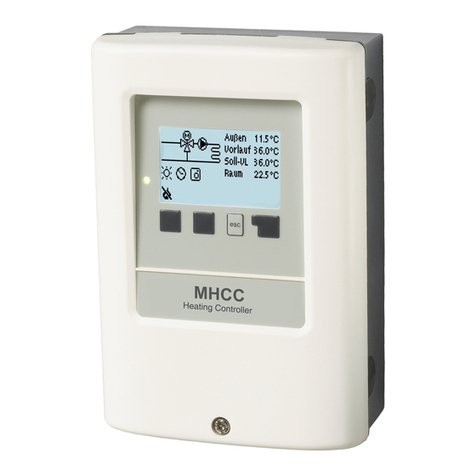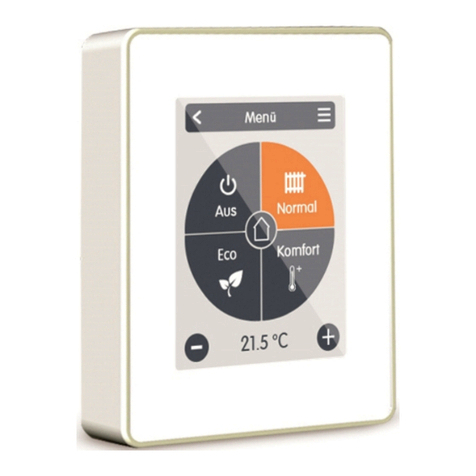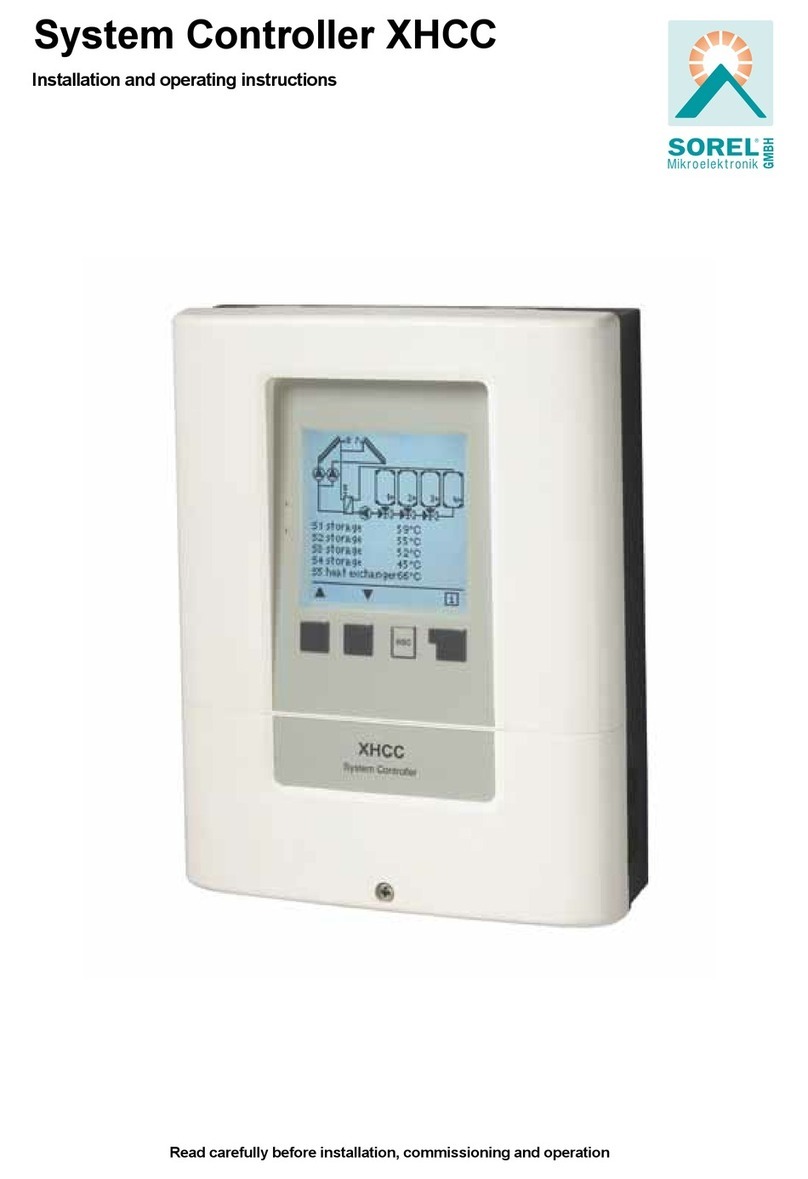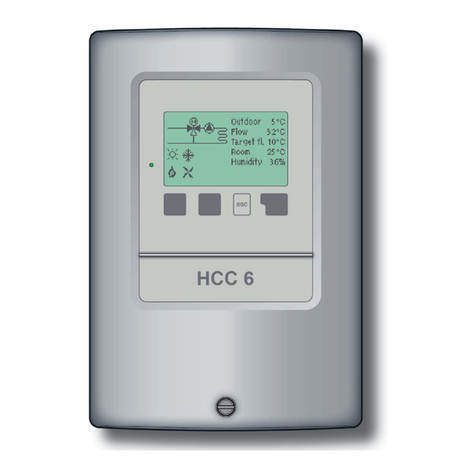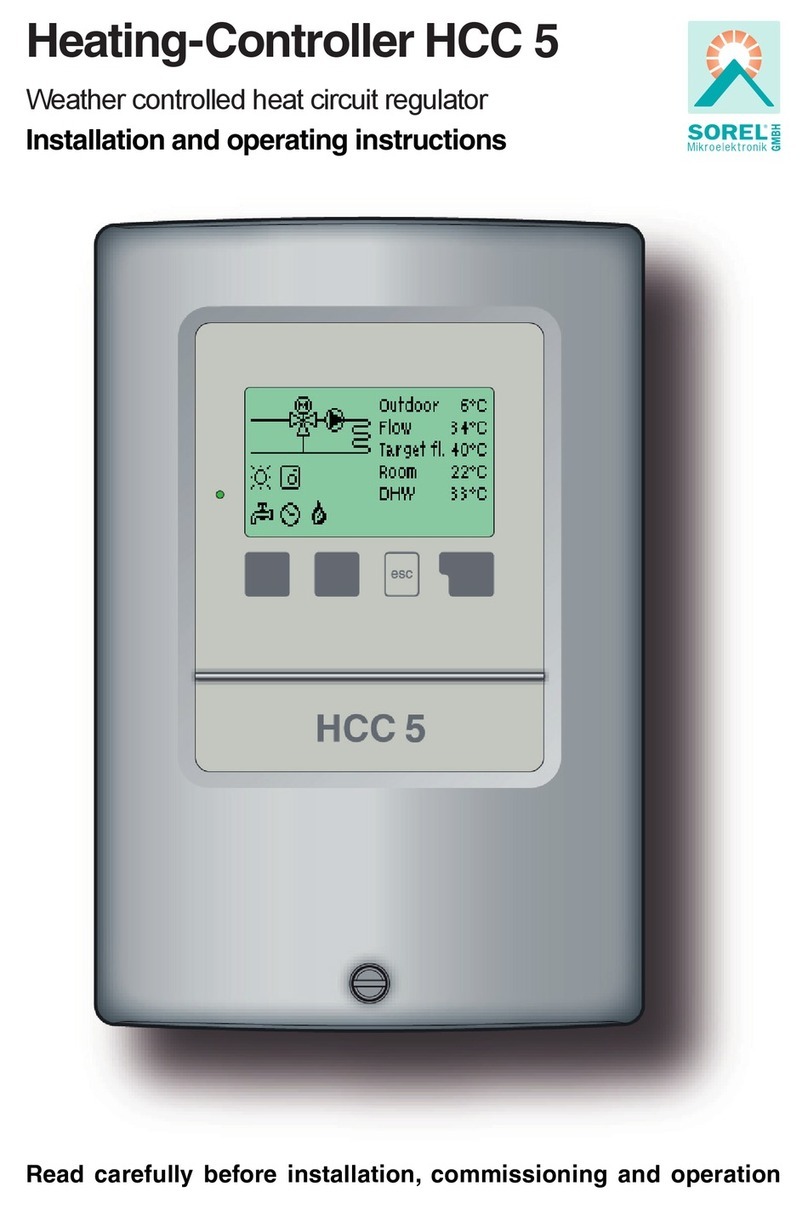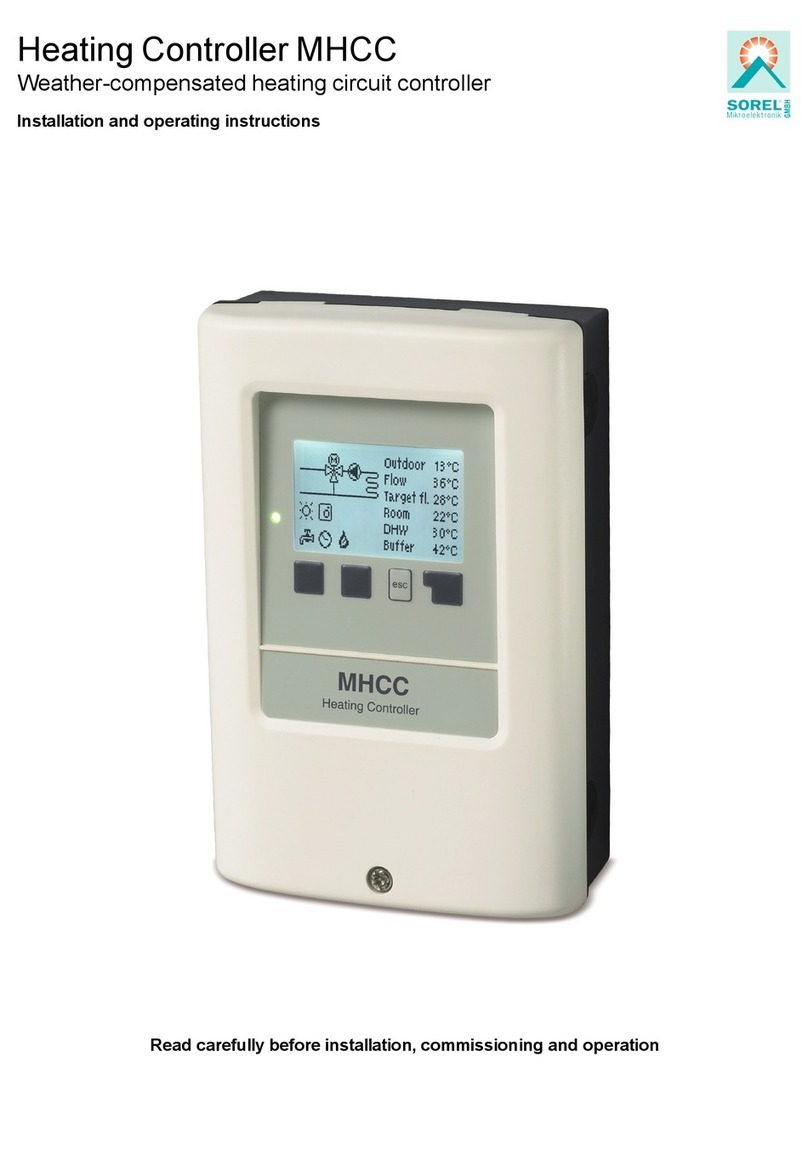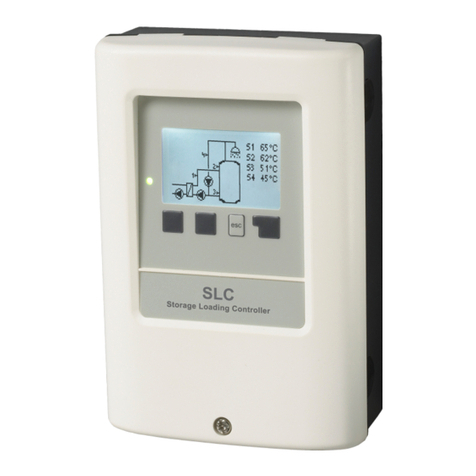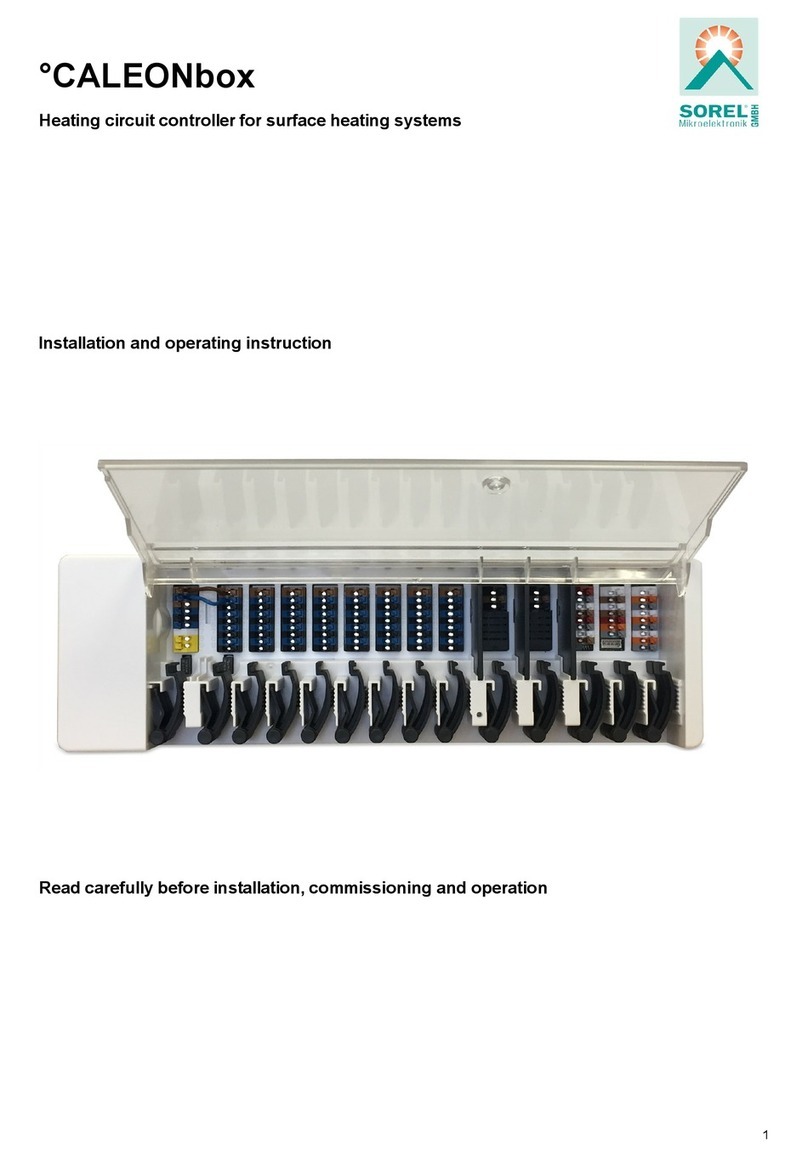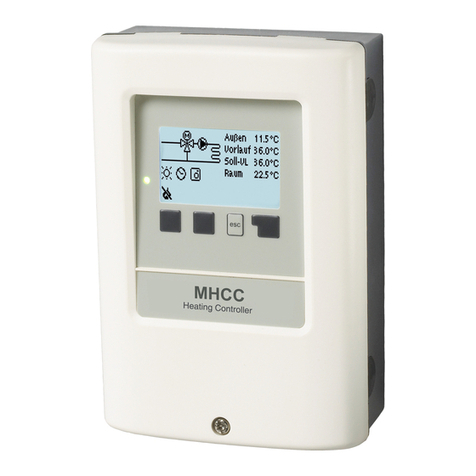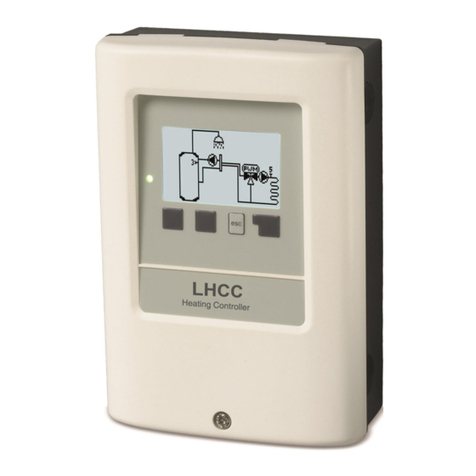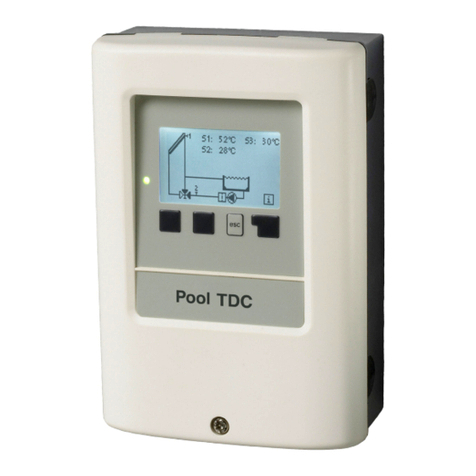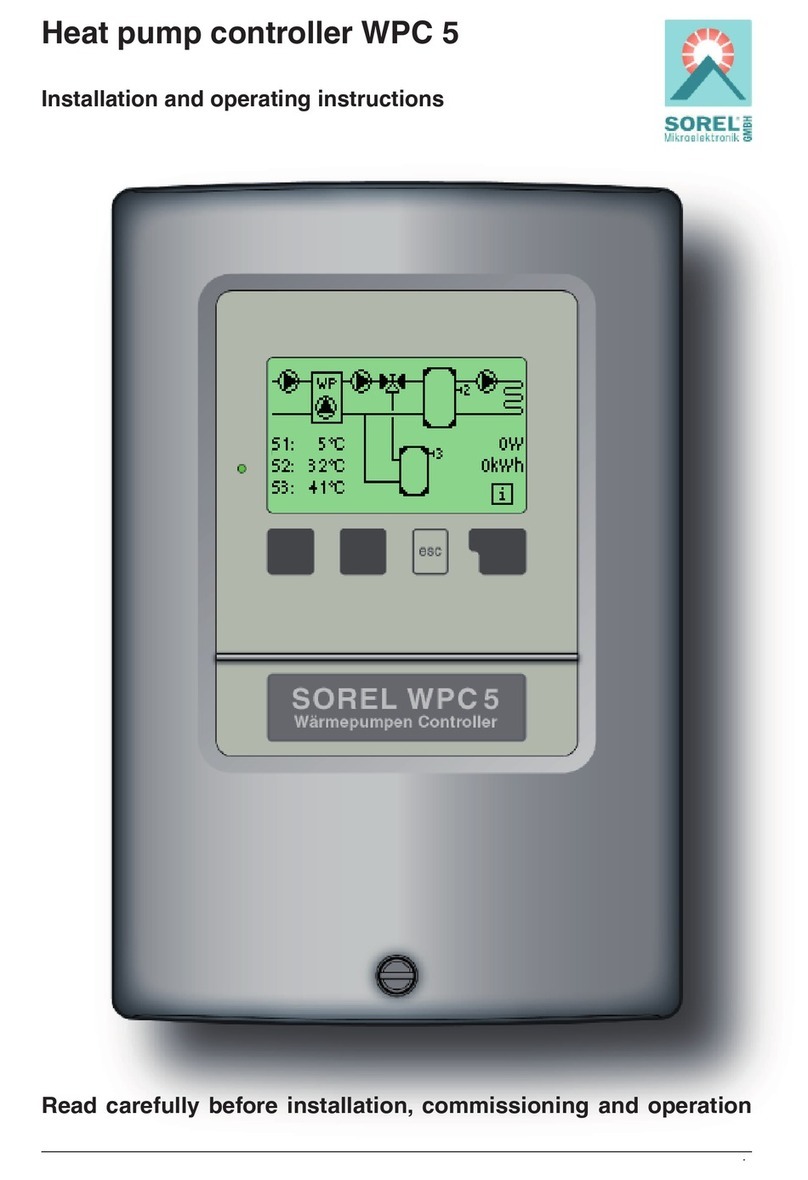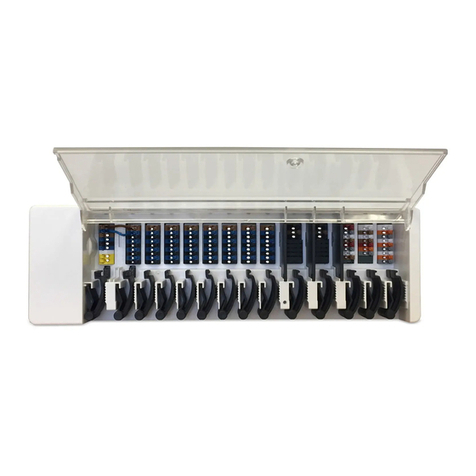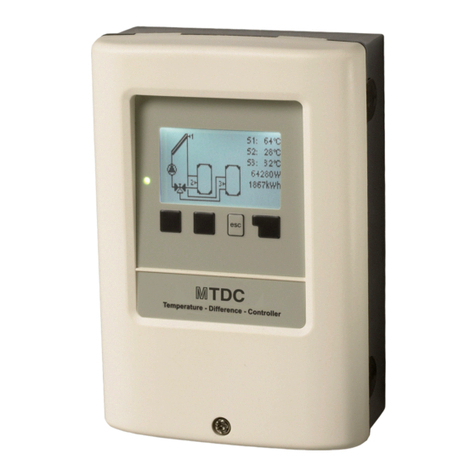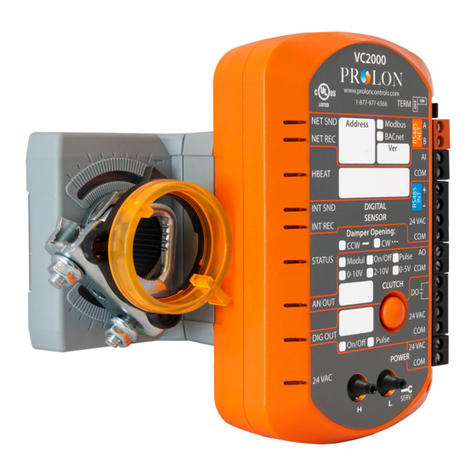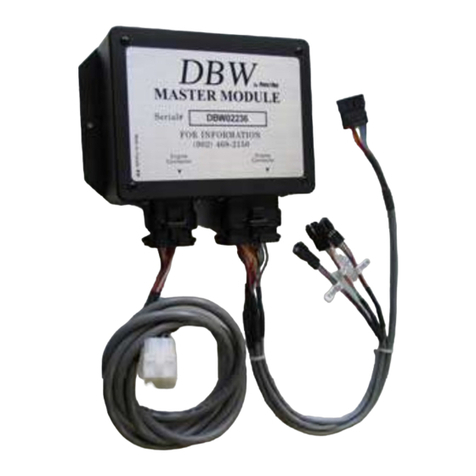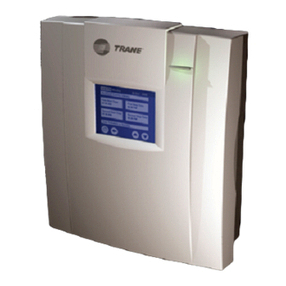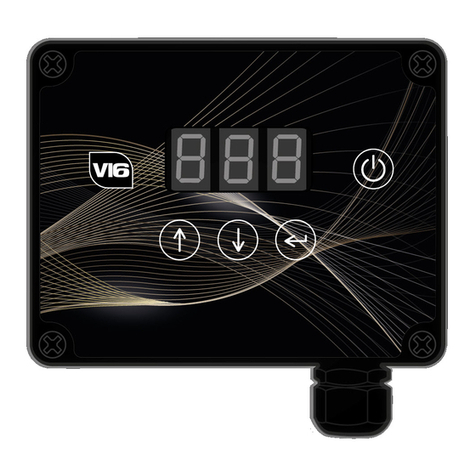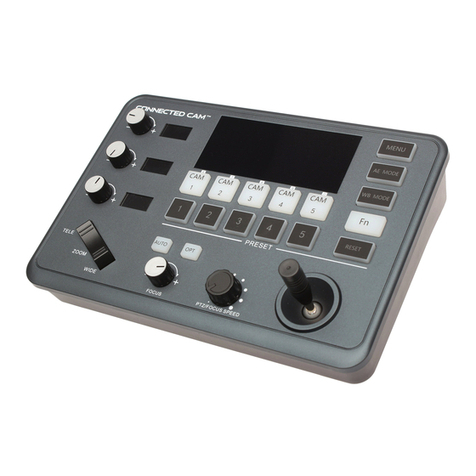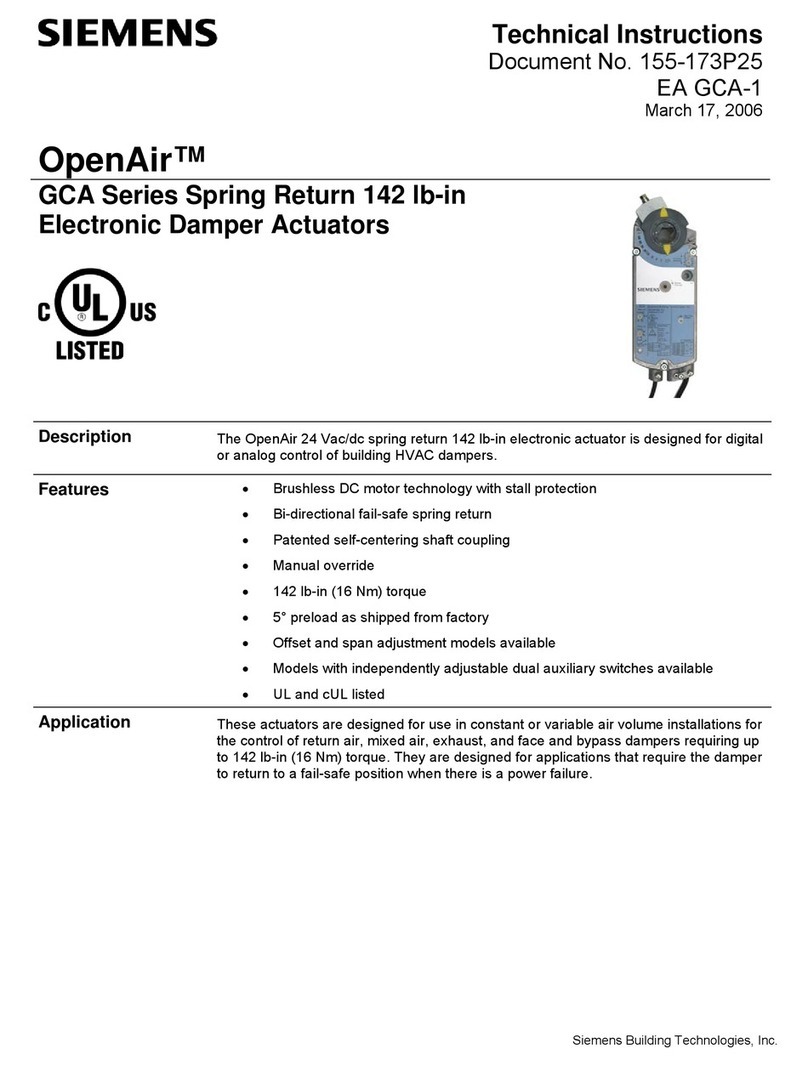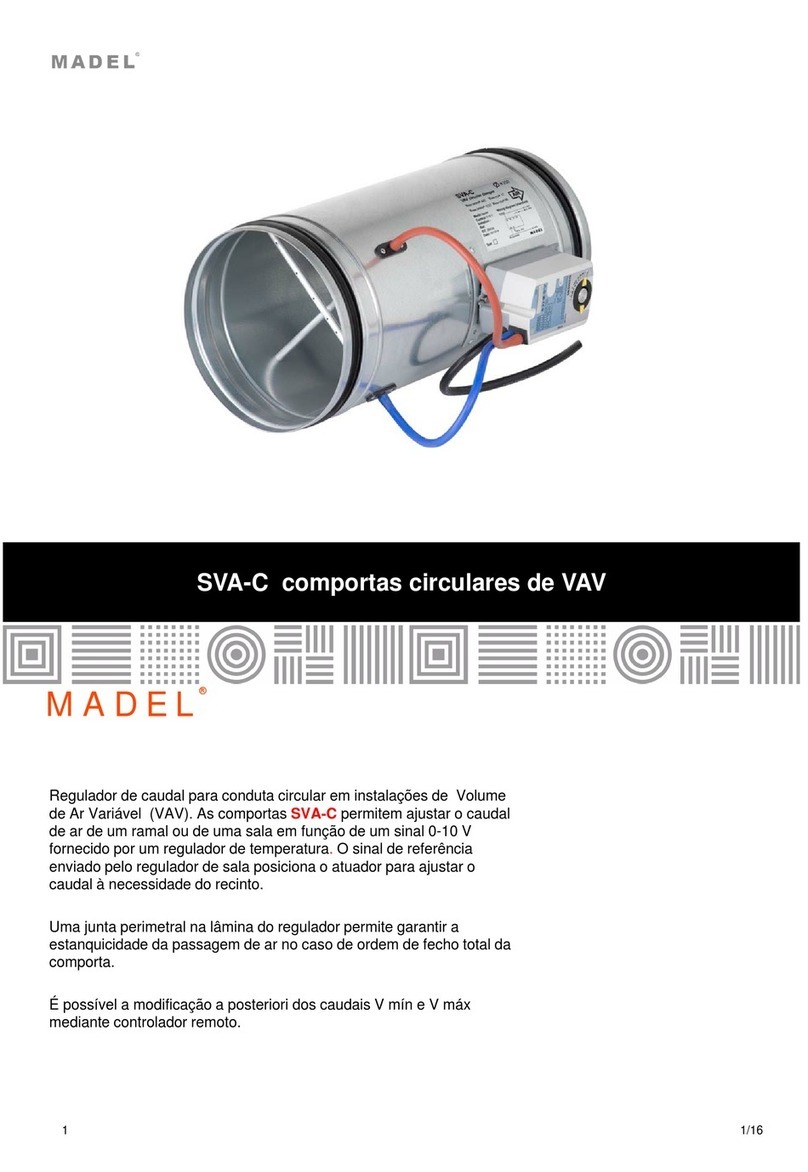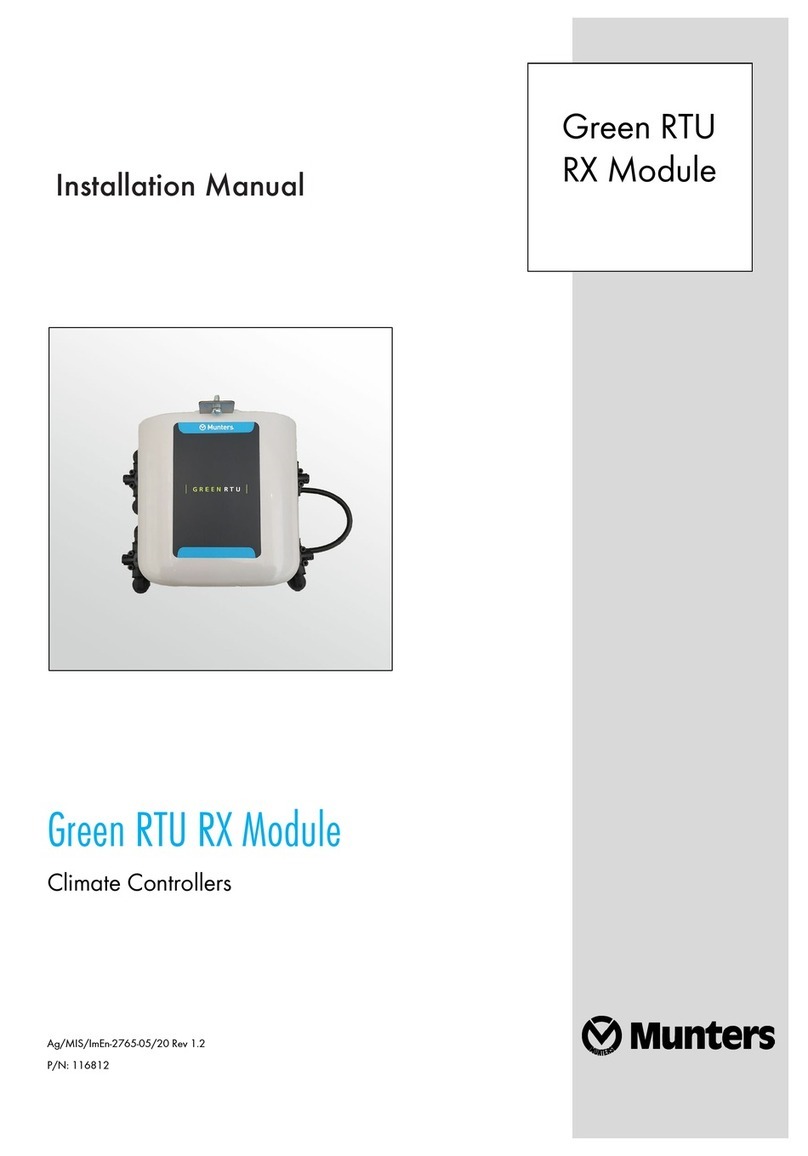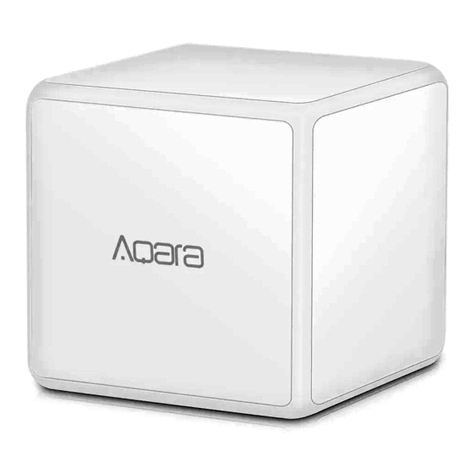Sorel FWC 5 User manual

Fresh water controller FWC 5
Installation and operating instructions
Read carefully before installation, commissioning and operation

2
page
page
Content
A.1 EC declaration of conformity 3
A.2 General instructions 3
A.3 Explanation of symbols 3
A.4 Changes to the unit 4
A.5 Warranty and liability 4
B.1 Specifications 5
B.2 Temperature resistance table
for Pt1000 sensors 5
B.2 About the controller 6
B.3 Scope of supply 6
B.4 Disposal and pollutants 6
B.5 Hydraulic variants 7
C.1 Wall installation 8
C.2 Electrical connection 9
C.3 Installing the temperature sensors 10
D Terminal connection diagram 11
E.1 Display and input 12
E.2 Commissioning help 13
E.3 Free commissioning 13
E.4 Menu sequence and menu structure 14
1. Measurement values 15
2. Statistics 16
2.2 Operating hours circ. 16
2.3 Heat output 16
2.4 Graphic overview 16
2.5 Message log 16
2.6 Reset/clear 16
3. Display mode 17
3.1 Schematic 17
3.2 Overview 17
3.3 Alternating 17
4. Operating modes 18
4.1 Automatic 18
4.2 Manual 18
4.3 Off 18
5. Settings 19
5.1 Tsetpoint 19
5.2 Tmax 19
5.3 Primary flow 19
5.4 Cold water 19
5.5 VFS-Type 20
5.6 Comfort 20
5.7 Circulation 20
5.8 Purging time 20
5.9 Circulation pause time 20
5.10 Cirk. Tmin. 21
5.11 Circ. hysteresis 21
5.12 Circulation period 21
6. Special functions 22
6.1 Time & Date 22
6.2 Sensor calibration 22
6.3 Commissioning 22
6.4 Factory settings 23
6.5 Mixer 23
6.6 Antilegionella 24
6.7 Speed control 25
6.8 Limescale protection 25
7. Menu Lock 26
8. Service values 27
9. Language 28
Z.1 Malfunctions with error messages 29
Z.2. Replacing the fuse 30
Z.3. Maintenance 30

3
Safety instructions
By affixing the CE mark to the unit the manufacturer declares that the FWC conforms to the
following relevant safety regulations:
- EC low voltage directive
73/23/EEC, as amended by 93/68/EEC
- EC electromagnetic compatibility directive
89/336/EEC version 92/31/EEC version 93/68/EEC
Conformity has been verified and the corresponding documentation and the EC declaration
of conformity are kept on file by the manufacturer.
A.1 EC declaration of conformity
These installation and operating instructions contain basic instructions and important infor-
mation regarding safety, installation, commissioning, maintenance and the optimal use of the
unit. Therefore these instructions must be read completely and understood by the installation
technician/ specialist and by the system user before installation, commissioning and opera-
tion of the unit.The valid accident prevention regulations, VDE regulations, the regulations
of the local power utility, the applicable DIN-EN standards and the installation and operating
instruction of the additional system components must also be observed. The controller does
not under any circumstances replace any safety devices to be provided by the customer!
Installation, electrical connection, commissioning and maintenance of the unit may only be
carried out by specialists who possess the appropriate training.
For the user: Make sure that the specialist gives you detailed information on the function and
operation of the controller. Always keep these instructions in the vicinity of the controller.
A.2 General instructions
Danger
Caution
A.3 Explanation of symbols
Failure to observe these instructions can result in danger to life from
electric voltage.
Danger
Failure to observe these instructions can result in serious damage to
health such as scalding, or even life-threatening injuries.
Caution
Failure to observe these instructions can result in destruction of the unit
or the system, or damage to the environment.
Information which is especially important for the function and optimal
use of the unit and the system.
It is essential that you read this!

4
Safety instructions
A.4 Changes to the unit
The controller has been manufactured and tested with regard to high quality and
safety requirements. The unit is subject to the statutory guarantee period of two years
from the date of sale.
The warranty and liability shall not include, however, any injury to persons or material
damage that is attributable to one or more of the following causes:
- Failure to observe these installation and operating instructions
- Improper installation, commissioning, maintenance and operation
- Improperly executed repairs
- Unauthorised structural changes to the unit
- Installation of additional components that have not been tested
together with the unit
- Any damage resulting from continued use of the unit despite an
obvious defect
- Failure to use original spare parts and accessories
- Use of the device for other than its intended purpose
- Operation above or below the limit values listed in the
specifications
- Force majeure
A.5 Warranty and liability
- Changes, additions to or conversion of the unit are not permitted without the writ-
ten permission from the manufacturer
- It is likewise forbidden to install additional components that have not been tested
together with the unit
- If it becomes clear that safe operation of the unit is no longer possible, for exam-
ple because of damage to the housing, then turn the controller off immediately
- Any parts of the unit or accessories that are not in perfect condition must be
exchanged immediately
- Use only original spare parts and accessories from the manufacturer.
- Markings made on the unit at the factory must not be altered, removed or made
illegible
- Only the settings actually described in these instructions may be made on the
controller
Changes to the unit can compromise the safety and function of the unit
or the entire system.
Danger

5
Electrical specifications:
Mains voltage 230VAC +/- 10%
Mains frequency 50...60Hz
Power consumption 2VA
Switched power
overall 460VA (Outputs 1-4)
per relay 460VA for AC1 / 185W for AC3
speed control 0-10V output, internal resistor 10kΩ
Internal Fuse 2A slow-blow 250V
Protection category IP40/II
Sensor inputs 4 x Pt1000 + 1x Vortex Flow Sensor (VFS)
Permissible ambient conditions:
Ambient temperature
for controller operation 0°C...40°C
for transport/storage 0°C...60°C
Air humidity
for controller operation max. 85% rel. humidity at 25°C
for transport/storage no moisture condensation permitted
Other specifications and dimensions
Housing design 2-part, ABS plastic
Installation methods Wall installation, optionally panel installation
Overall dimensions 163mm x 110mm x 52mm
Aperture installation dimensions 157mm x 106mm x 31mm
Display Fully graphical display 128 x 64 dots
Light diode Multicolour
Operation 4 entry keys
Temperature sensors: (may not be included in the scope of supply)
immersion sensor Pt1000, e.g. TT/P4 up to 95°C
pipe-mounted sensor Pt1000, e.g. TR/P4 up to 95°C
Vortex Flow Sensor flow and temperature measuring
Sensor leads 2x0.75mm² extendable to max. 30m
Vortex Flow Sensor leads : extendable up to 3 m
B.1 Specifications
B.2 Temperature resistance table for Pt1000 sensors
°C 0 102030405060708090100
Ω1000 1039 1077 1116 1155 1194 1232 1270 1308 1347 1385
Description of controller

6
The Fresh water controller FWC5 facilitates efficient use and function control of your
fresh water system. The device is impressive most of all for its functionality and simp-
le, almost self-explanatory operation. For each step in the input process the individual
entry keys are assigned to appropriate functions and explained. The controller menu
contains headwords for the measured values and settings, as well as help texts or
clearly-structured graphics.
Important characteristics of the FWC5:
- 0 - 10V output for speed control
- Simple viewing of the current measurement values
- Analysis and monitoring of the system by means of statistical graphics,etc.
- Extensive setting menus with explanations
- Menu block can be activated to prevent unintentional setting changes
- Resetting to previously selected values or factory settings
B.2 About the controller
Description of controller
- Fresh water controller FWC
- replacement fuse 2A slow-blow
- Installation and operating instructions FWC
Optionally contained depending on design/order:
- Pt1000 temperature sensor and Vortex Flow Sensor (TFS)
B.3 Scope of supply
B.4 Disposal and pollutants
The unit conforms to the European RoHS directive 2002/95/EC for the restriction of
the use of certain hazardous substances in electrical and electronic equipment.
Caution
The unit must not under any circumstances be disposed of with ordinary
household refuse. Dispose of the unit only at appropriate collection
points or ship it back to the seller or manufacturer.

7
Description of controller
B.5 Hydraulic variants
Caution
2.5 Hydraulic variants
The following illustration should be viewed only as schematic diagram sho-
wing the hydraulic system, and does not claim to be complete. The controller
does not replace safety devices under any circumstances. Depending on the
specific application, additional system components and safety components
may be mandatory, such as check valves, non-return valves, safety tempera-
ture limiters, scalding protectors, etc., and must therefore be provided.

8
C.1.1
C.1.2
Caution
C.1 Wall installation
Install the controller only in dry areas and under the ambient conditions de-
scribed under B.1 “Specifications”. Carry out the following steps 1-8.
1. Unscrew cover screw completely
2. Carefully pull upper part of housing
from lower part.
3. Set upper part of housing aside, being
sure not to touch the electronics when
doing so.
4. Hold the lower part of the housing up
to the selected position and mark the 3
mounting holes. Make sure that the wall
surface is as even as possible so that the
housing does not become distorted when
it is screwed on.
5. Using a drill and size 6 bit, drill 3 holes
at the points marked on the wall and push
in the plugs.
6. Insert the upper screw and screw it in
slightly.
7. Fit the upper part of the housing and
insert the other two screws.
8. Align the housing and tighten the three
screws.
Installation

9
Fig .C.2.1
1. Select necessary program/ hydraulics
2. Open controller
3. Strip cables by 55mm max., insert, fit the
strain relief devices, strip the last 8-9mm
of the wires. (Fig. C.2.1)
4. Open the terminals using a suitable
screwdriver (Fig. C.2.1) and make electrical
connections on the controller (Page 10)
5. Refit upper part of housing and fasten with
screw.
6. Switch on mains voltage and place con-
troller in operation.
Installation
C.2 Electrical connection
Danger
Before working on the unit, switch off the power supply and secure it
against being switched on again! Check for the absence of power!
Electrical connections may only be made by a specialist and in compli-
ance with the applicable regulations.
Do not use the controller if the housing shows visible damage.
Caution
Low-voltage cables such as temperature sensor cables must be routed
separately from mains voltage cables. Feed temperature sensor cables
only into the left-hand side of the unit, and mains voltage cables only
into the right-hand side.
Caution
The customer must provide an all-pole disconnecting device, e.g. a
heating emergency switch.
Caution
The cables being connected to the unit must not be stripped by more
than 55mm, and the cable jacket must reach into the housing just to the
other side of the strain relief.

10
C.3 Installing the temperature sensors
The temperature sensor cables must be routed separately from mains voltage
cables, and must not, for example, be routed in the same cable duct!
The controller operates with Pt1000 temperature sensors which are accurate to the
degree, thus ensuring optimal control of system functions.
If desired the sensor cables can be extended to a maximum of 30m using a ca-
ble with a cross-section of at least 0.75mm². Make sure that there is no contact
resistance!
Position the sensor precisely in the area to be measured!
Only use immersion, pipe-mounted or flat-mounted sensor suitable for the spe-
cific area of application with the appropriate permissible temperature range.
Caution
Caution
1. Select necessary program/ hydraulics
2. Open controller
3. Strip cables by 55mm max., insert, fit the
strain relief devices, strip the last 8-9mm
of the wires. (Fig. C.2.1)
4. Open the terminals using a suitable
screwdriver (Fig. C.2.1) and make electrical
connections on the controller (Page 10)
5. Refit upper part of housing and fasten with
screw.
6. Switch on mains voltage and place con-
troller in operation.
C.2.1
Installation

11
Low voltage side
max. 12V
Caution Danger
Mains side
230VAC
Mains voltage 230VAC 50-60Hz connection
in the right-hand terminal compartment!
Terminal: Connection for:
L Mains phase conductor L
N Mains neutral conductor N
R1 Valve (storage middle)
R2 Circulation pump
R3 Mixer open
R4 Mixer close
R5 heat requirement
R5I heat requirement
The PE protective conductor must be connec-
ted to the PE metal terminal block!
Connection of relay lead N via terminal block
Sensor N.
Low voltage max. 12VAC/DC connection in
the left-hand terminal compartment!
Terminal: Connection for:
S1 Primary return
S2 Circulation
S3 Storage middle
S4 Primary flow
S5 VFS hot water
(VFS yellow)
S6 VFS flow l/min
(VFS white)
+ VFS +5V DC
(VFS brown)
- jumper terminal block-
Z1 GND
Z2 0-10V Pumpe
The polarity of the PT1000 sensors is freely
selectable.
Connection of sensor earths (S1-S4) and
VFS via terminal block sensor S-
The potential free relay R5 is always switched on for the heat requirement when the
0-10V output is switched on.
Relay 5 can only be used with mains voltage of 230VAC. Never use with low voltage.
The storage zone valve at R1 is switched on and directs energy to the middle of the
storage when S1 > S3.
Caution
Caution
Installation
D Terminal connection diagram

12
Examples for display icons:
Pump
(rotates when active)
Flow meter
Heat exchanger
temperature probe
Mixer
Valve
Storage
Warning / Error message
New information
(1)
(2)
(3)
(4)
The display (1), with its extensive text and
graphics mode, is almost self-explanatory,
allowing easy operation of the controller.
The LED (2) lights up green when a relay
is switched on.
The LED (2) lights up red when operating
mode “Off” is set.
The LED (2) flashes slowly red in the
operating mode “Manual”.
The LED (2) flashes quickly red when an
error is present.
Entries are made using four keys (3+4),
which are assigned to different functions
depending on the situation. The “esc”
key (3) is used to cancel an entry or to
exit a menu. If applicable there will be a
request for confirmation as to whether the
changes which have been made should
be saved.
The function of each of the other three
keys (4) is shown in the display line di-
rectly above the keys; the right-hand key
is generally has a confirmation and selec-
tion function.
Examples of key functions:
+/- = enlarge/shrink values
▼/▲= scroll menu down/up
yes/no = approve/reject
Info = additional information
Back = to previous screen
ok = confirm selection
Confirm = confirm setting
Operation
E.1 Display and input

13
E.2 Commissioning help
E.3 Free commissioning
If you decide not to use the commissioning help, you should make the necessary set-
tings in the following sequence:
- Menu 6. Special functions - clock
- Menu 5. Settings, complete
Finally, menu 4.2 under operating mode “Manual“ should be used to test the switch
outputs with the consumers connected, and to check the sensor values for plausibility.
Then switch on automatic mode.
brief descriptions of each parameter in the display. Pressing the “esc” key takes you
back to the previous value so you can look at the selected setting again or adjust it if
desired. Pressing the “esc“ more than once takes you back step by step to the selec-
tion mode, thus cancelling the commissioning help. Finally, menu 4.2 under operating
mode “Manual” should be used to test the switch outputs with the consumers connec-
ted, and to check the sensor values for plausibility. Then switch on automatic mode.
The first time the controller is turned on
and after the language and time are set,
a query appears as to whether you want
to parametrise the controller using the
commissioning help or not. The commis-
sioning help can also be terminated or
called up again at any time in the special
functions menu. The commissioning help
guides you through the necessary basic
settings in the correct order, and provides
Parametrisation
Caution
Observe the explanations for the the individual parameters on the fol-
lowing pages, and check whether further settings are necessary for your
application.
Caution
Observe the explanations for the the individual parameters on the
following pages, and check whether further settings are necessary
for your application.

14
Select the menu language
Current temperature values with
explanations
Function control of the system with
operating hours, etc.
Select graphics mode or overview
mode
Automatic mode, manual mode or
switch unit off
Set parameters needed for normal
operation
Program selection, clock, etc.
Against unintentional setting chan-
ges at critical points
For diagnosis in the event of an
error
E.4 Menu sequence and menu structure
The graphics or overview mode appears
when no key has been press for 2 min-
utes, or when the main menu is exited by
pressing “esc“.
Pressing a key in graphics or overview
mode takes you directly to the main menu.
The following menu items are then avail-
able for selection there:
Operation
1. Measurements
2. Statistics
3. Display Mode
4. Operating Mode
5. Settings
6. Special functions
7. Menu lock
8. Service data
9. Language

15
Caution
Caution
The menu “1. Measurement values”
serves to display the currently measured
temperatures.
The menu is closed by pressing “esc” or
selecting “Exit measurement values”.
Selecting “Info” leads to a brief help text
explaining the measurement values.
Selecting “Overview” or “esc” exits the
Info mode.
If “Error” appears on the display instead of the measurement value, then
there may be a defective or incorrect temperature sensor.
If the cables are too long or the sensors are not placed optimally, the
result may be small deviations in the measurement values. In this case
the display values can be compensated for by making entries on the
controller. Follow the instructions under 7.3.
What measurement values are displayed depends on the selected pro-
gram, the connected sensors and the specific device design.
The temperature shown is the temperature after the heat exchanger and can
deviate from the tap water temperature.
Small fluctuations of the tap water temperature are usually compensated by
the pipe system.
Measurement values
1. - Measurement values

16
2. - Statistics
The menu “2. Statistics” is used for func-
tion control and long-term monitoring of
the system.
The menu is closed by pressing “esc” or
selecting “Exit statistics”.
Statistics
Caution
For analysis of the system data it is essential for the time to be set ac-
curately on the controller. Please note that the clock does not continue
to run if the mains voltage is interrupted, and must therefore be reset.
Improper operation or an incorrect time may result in data being deleted,
recorded incorrectly or overwritten.
The manufacturer accepts no liability for the recorded data!
2.1. - Operating hours HW
Display of operating hours of the hot water pump connected to the controller.
Display of operating hours of the circulation pump connected to the controller.
2.2. - Operating hours circ.
2.3. - Heat output
Display of the heat output of the system.
2.4. - Graphic overview
This provides a clearly-organised display of the data listed under 2.1-2.3 as a bar
graph. Various time ranges are available for comparison. The two left-hand keys can
be used to page through the data.
2.5. - Message log
Display of the last 10 events occurring in the system with indication of date and time.
Caution
Resulting data is only approximate value for function control!
Resetting and deleting the individual analyses. The function “All statistics” clears all
analyses but not the error messages.
2.6. - Reset/clear

17
Menu “3. Display mode” is used to define
the controller’s display for normal opera-
tion.
This display appears whenever two min-
utes go by without any key being pressed.
The main menu appears again when a
key is pressed.
The menu is closed by pressing “esc” or
selecting “Exit display mode”.
Display mode
3. - Display mode
3.1. - Schematic
In graphics mode, the selected hydraulic systems are depicted with the measured
temperatures and operating states of the connected consumers.
3.2. - Overview
In overview mode, the measured temperatures and operating states of the connected
consumers are depicted in text form.
3.3. - Alternating
In alternating mode the schematic mode and then the overview mode are active for 5
seconds at a time.

18
4. - Operating modes
In menu “4. Operating modes” the cont-
roller can either be placed in automatic
mode, switched off, or placed in a manual
operating mode.
The menu is closed by pressing “esc” or
selecting “Exit operating modes”.
Automatic mode is the normal operating mode of the controller. Only automatic mode
provides proper controller function taking into account the current temperatures and
the parameters that have been set! After an interruption of the mains voltage the cont-
roller automatically returns to the last operating mode selected!
4.1. - Automatic
Operating modes
4.2. - Manual
The relay and thus the connected consumer are switched on and off by pressing a
key, with no regard to the current temperatures and the parameters which have been
set. The measured temperatures are also shown to provide an overview and function
control. The high-efficency pump is named here “Relay 6”, despite the fact that it is
connected to the Z terminal.
4.3. - Off
When the operating mode “Off” is activated, all controller functions are
switched off. This can lead, for example, to overheating on the solar
collector or other system components. The measured temperatures are
sstill displayed to provide an overview.
Caution
Danger
When operating mode “Manual” is activated, the current temperatu-
res and the selected parameters are no longer considered. There is
a danger of scalding or serious damage to the system. The operating
mode “Manual” may only be used by specialists for brief function tests
or during commissioning!

19
5. - Settings
The necessary basic settings required for
the control function are made in menu “5.
Settings”.
Maximum temperature at sensor 5
Maximum allowable temperature at sensor 5. If Tmax is exceeded, the pump is swit-
ched off. If the temperature drops below Tmax the pump is enabled again.
Settings range: Tset+5°C to 95°C / Default: 71°C
5.2. - Tmax
Setpoint temperature at the mixer in the primary flow
The setpoint temperature in the primary heat circuit when the flow rate is at its mini-
mum.
Settings range:
40° C bis 69° C
/ Default setting: 61° C
5.3. - Primary flow Min
Setpoint temperature at the mixer in the primary flow
The setpoint temperature in the primary heat circuit when the flow rate is at its max.
Settings range:
62° C bis 90° C
/ Default setting: 70° C
5.4. - Primary flow Max
5.1. - Tsetpoint
Setpoint at sensor 5
The controller FWC attempts to maintain a constant temperature at sensor 5 by cont-
rolling the speed of the hot water pump.
Settings range: 45°C to Tmax-5°C / Default: 61°C
Caution
This does not under any circum-
stances replace the safety facili-
ties to be provided by the custo-
mer!
The menu is closed by pressing “esc” or
selecting “Exit settings”.
Settings
Caution
Temperature values which are set too high can lead to scalding or damage
to the system. Scalding protection must be provided by the customer!

20
Settings
5.5. - Tset S3
Thermostat function at sensor 3
If the temperature at sensor 3 exceeds this value (+hysteresis) the corresponding relay
is switched off. If the temperature at sensor 3 falls below this value and the other con-
ditions are also met, the corresponding relay is switched on.
Setting range: from 0°C to 99°C/ Default: 50°C
5.6. - Thermostat periods
Thermostat activity times
Set the desired periods of time when the thermostat should be active. 2 periods can
be set per day, settings can also be copied to other days. Outside the set times the
thermostat is switched off.
Setting range: from 00:00 to 23:59 / Default: 06:00 to 22:00
5.7. - Hysteresis
Hysteresis for thermostat function
By setting the hysteresis value the heating of the storage tank can be adjusted.If the
temperature of the Tsetpoint at sensor is exceeded by the set hysteresis, additional
heating is deactivated.
Setting range: from 0°C to 20°C / Default: 10°C
Temperature of the water fed into the system
The temperature of the water for domestic use fed into the system can be set here.
This is used to calculate the heat amount.
Settings range: 0°C to 60°C / Default : 10°C
5.8. - Cold water
5.9. - VFS-Type
Select the type of flow sensor used.
Settings range: 1-12l/min, 1-20l/min, 2-40l/min, 5-100l/min, 10-200l/min, 20-400l/min
5.10. - Comfort
The heat exchanger is rinsed every 15 minutes to keep it warm.
Settings range: On, Off / Default: Off
Table of contents
Other Sorel Controllers manuals
Popular Controllers manuals by other brands
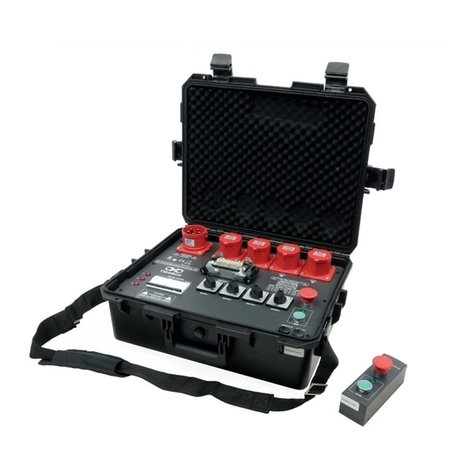
OXO
OXO TM4BOX instruction manual
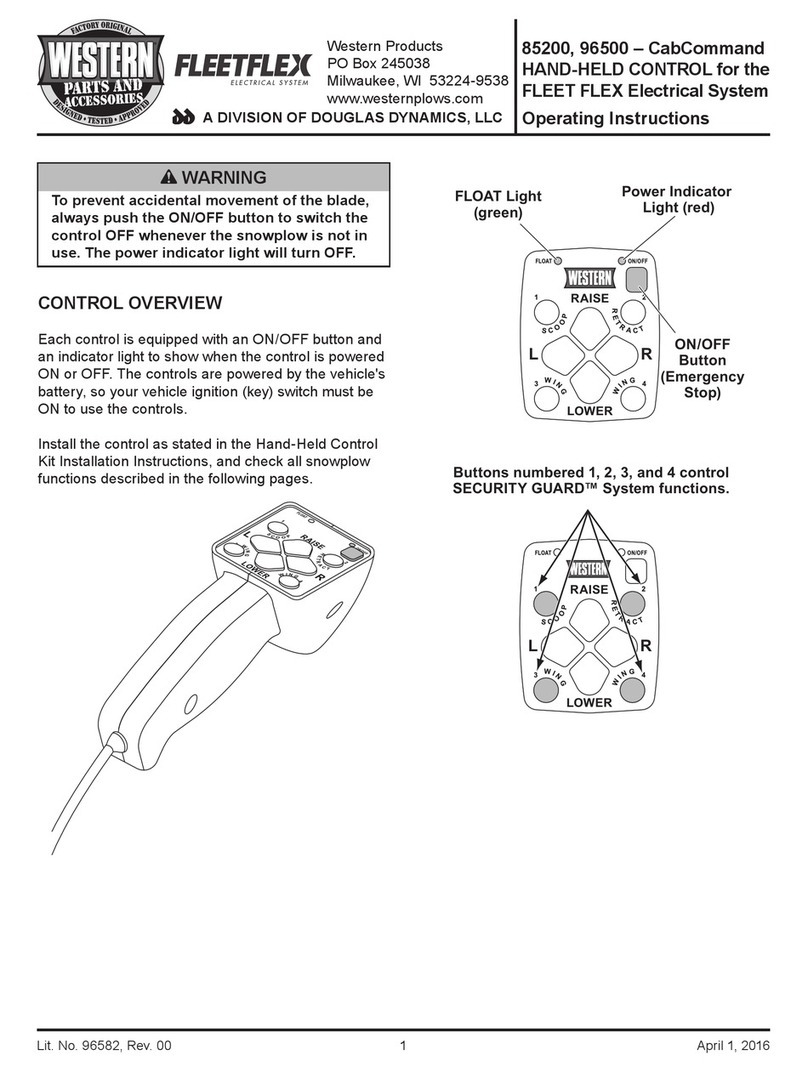
Douglas Dynamics
Douglas Dynamics Western 85200 operating instructions
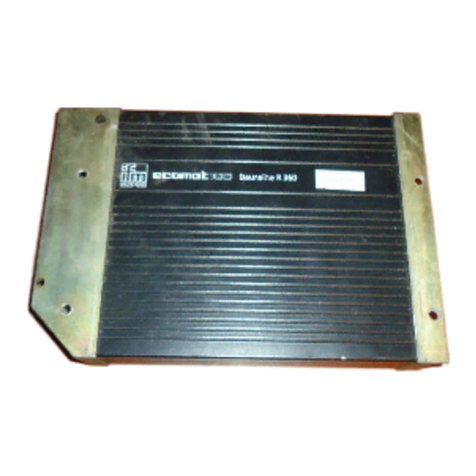
IFM Electronic
IFM Electronic ecomat 100 R 360 Mounting and installation instructions
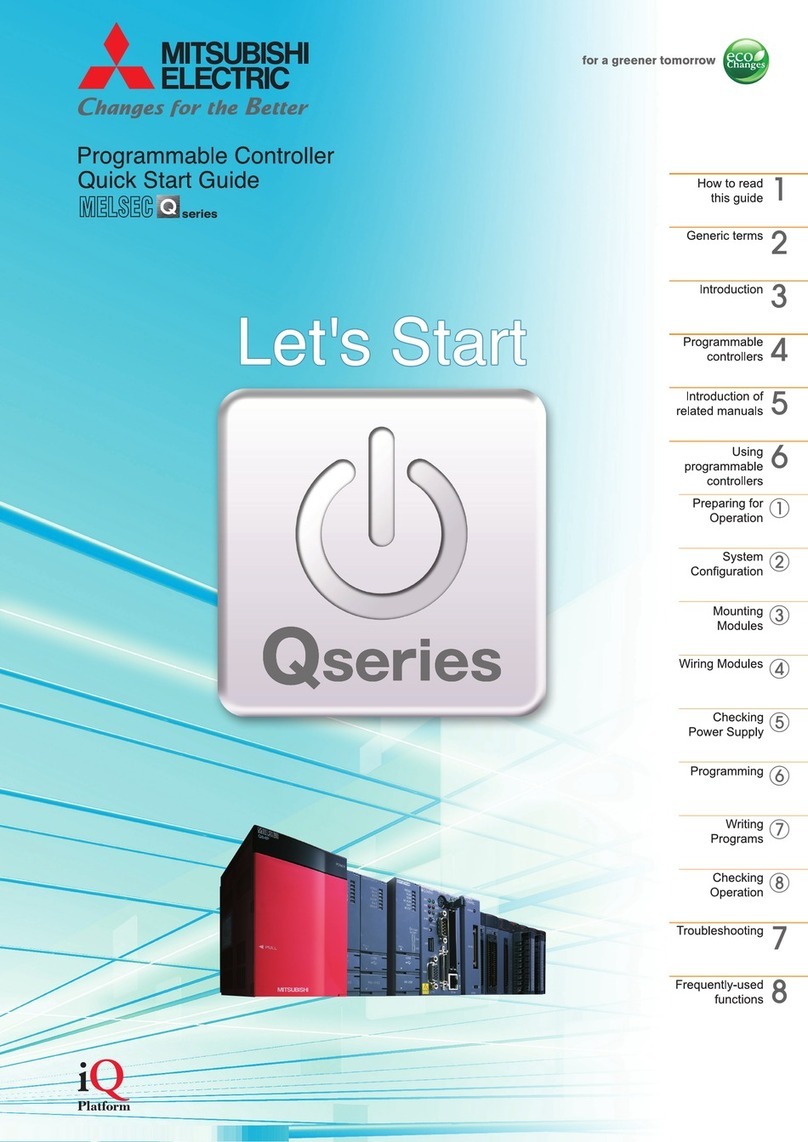
Mitsubishi Electric
Mitsubishi Electric MELSEC Q Series quick start guide
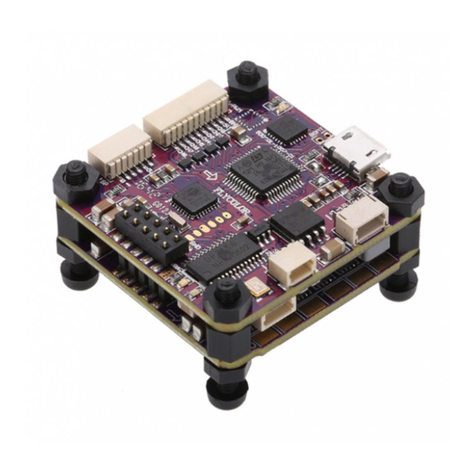
Flycolor
Flycolor Raptor390 Tower-20A user manual
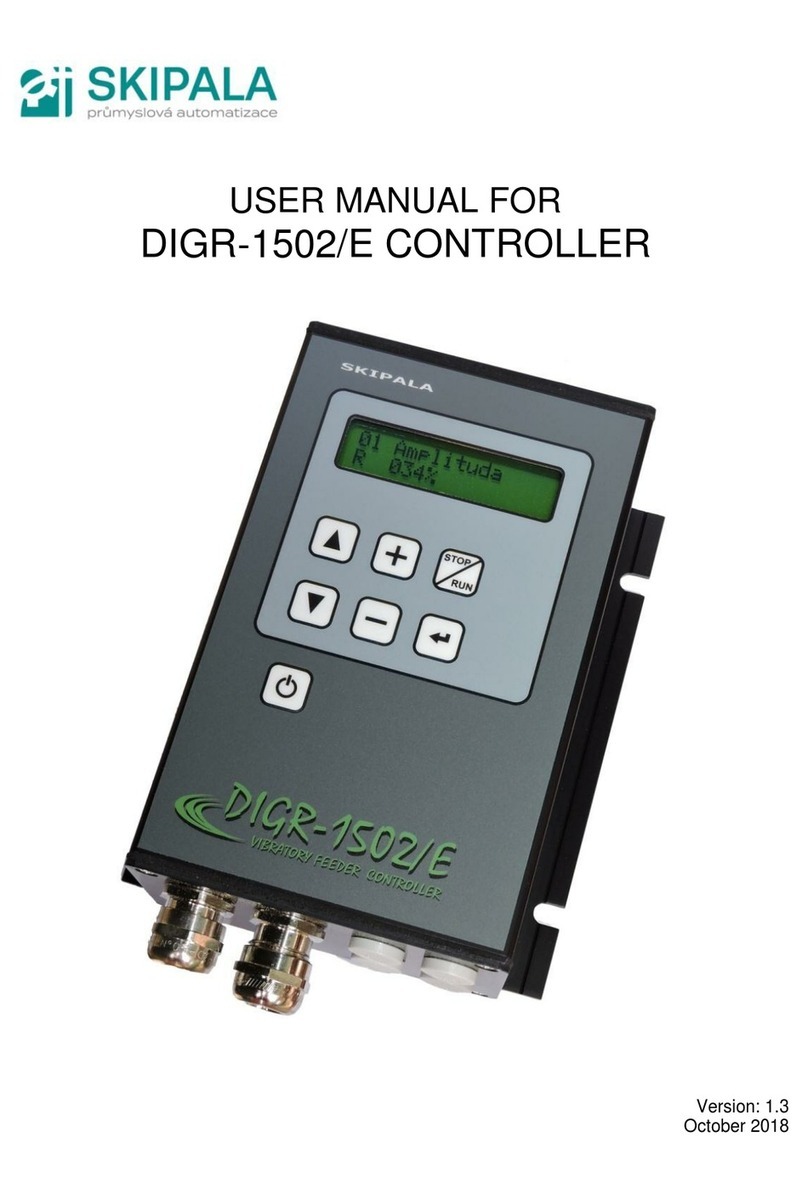
Skipala
Skipala DIGR-1502/E user manual
